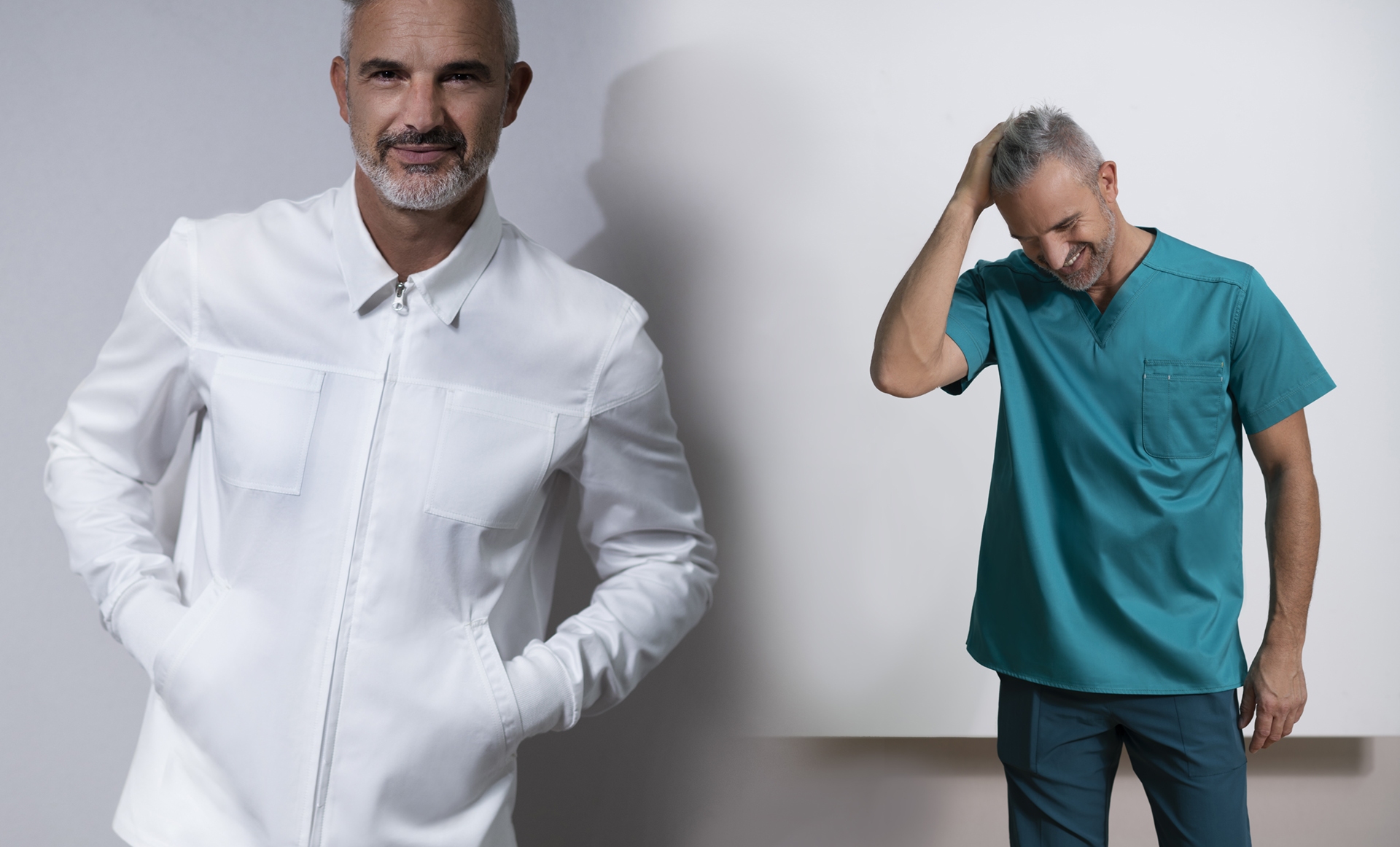
How to choose a lab coat?
In the health sector, the lab coat must be a personal protective device, PPE, adopted to protect the operator from any risks detected, to comply with the obligations of the employer according to EU 425/2016.
Comfort: the Lab coat must ensure breathability and comfort in order to facilitate normal daily operation. It must also be made of a tissue that facilitates the removal of any stains and disinfection or sterilization.
Disinfection and Sterilization: usually, in the case of private facilities, the maintenance of the lab coat takes place in the household washing machine. In order to avoid contamination, disinfectants are used. But, due to their specific formulation, weaken the fibres, age and discolour the garments early, and in the absence of an adequate and accurate rinsing, can remain on the fibers and create epidermal reactions. We often forget, that already a washing at 60 º maintained for 30 minutes guarantees a perfect disinfection without polluting the environment nor withholding substances harmful to our health, for greater safety the shirts without metallic components, as zippers or press studs, can be sterilized in autoclave.
Long or short sleeves: the long sleeves provide greater protection to the operator but when used for more patients can be carriers of infections from one patient to another. The short sleeve allows washing of the forearm to ensure greater hygiene.
White or color: white is a classic to highlight the belonging to the category and to strengthen the professionalism, and as from recent studies, increases the safety of the patient on the professionalism of the operator. But even the colored is ideal as long as it combines harmoniously with the environment and function and is not chosen only to reduce the number of maintenance required.
Type of fabric: the type of fabric is closely linked to the purchase price, cheap for polyester blends or more expensive for pure cotton.
Generally you should search for a fabric of pleasant appearance and especially breathable , worked with care and that ensures good resistance to the high temperatures of the washes while maintaining the original appearance. Too often we find ourselves faced with grey garments and poor manufacture that unfailingly damage the image that you want to convey.
Formaldehyde & Co: Treatments carried out outside the European market, especially on economic tissues, do not follow the OEKOTEX 100 standard, to guarantee non-toxicity. Formaldehyde is often used to ensure a no-ironing result, lead as a color fixer, caustic soda to soften the fibers, etc. etc. These dangerous chemicals are not usable for tissue production within European countries. In any case it is always advisable, to avoid allergic reactions, always check the origin of the garment, choosing items with OEKOTEX 100 certification, in case they use extra-European fabrics, or articles which guarantee a fabric produced within the European community where, since 1992, chemical components harmful to health and the environment have been banned.
Informative obligations for public grants: the State aid and de minimis aid received by our company are listed in the National Register of State Aid referred to in Article 52 of Law 234/2012, which can be accessed at the following link: https://www.rna.gov.it/trasparenza/aiuti